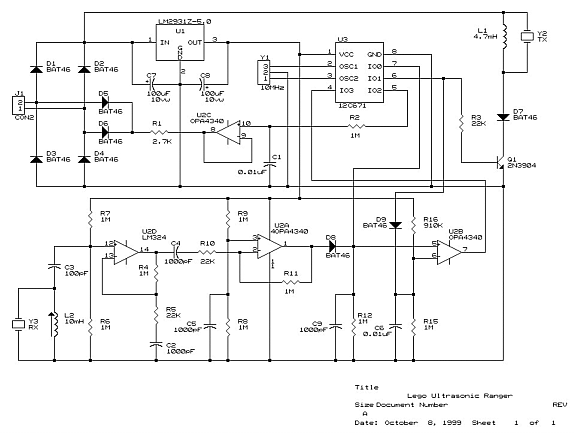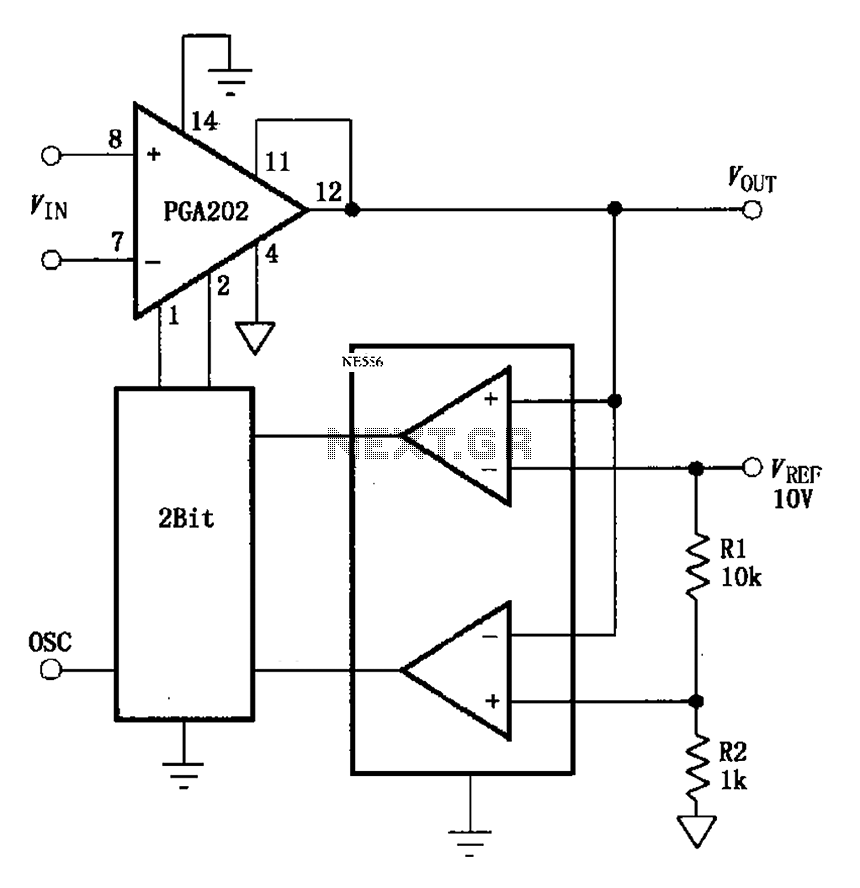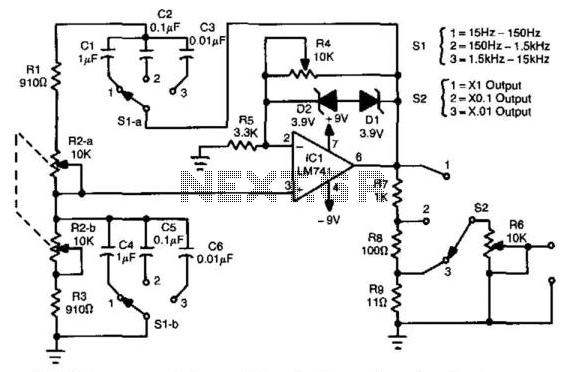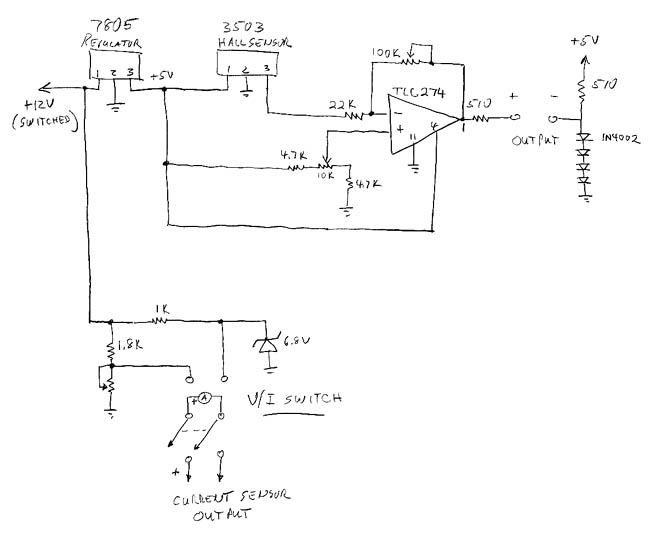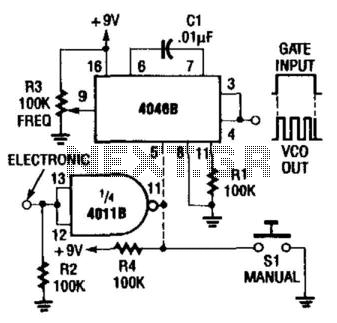
Ammeter with six decade range
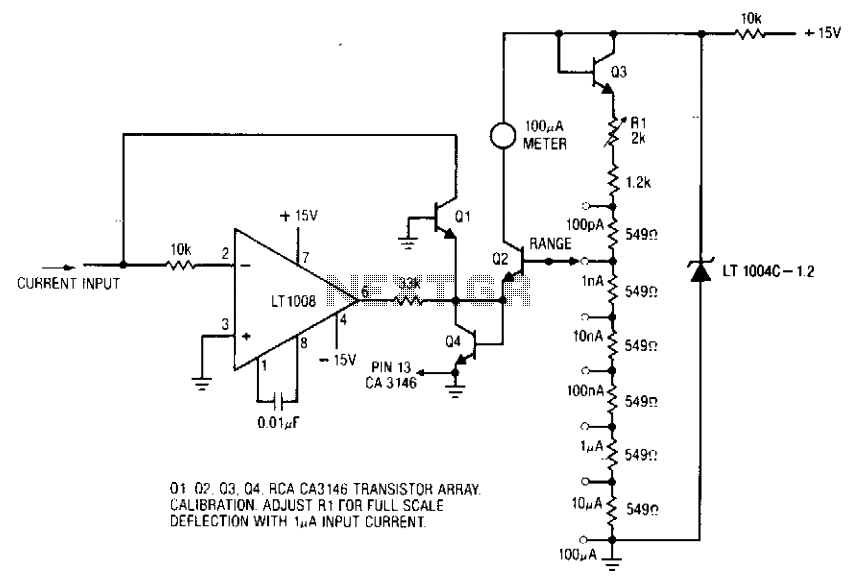
The ammeter measures currents ranging from 100 pA to 100 µA without the need for costly high-value resistors. Accuracy at 100 µA is constrained by the offset voltage between Q1 and Q2, while at 100 pA, it is limited by the inverting bias current of the LT1008.
The ammeter circuit is designed to provide precise current measurements over a broad dynamic range, from picoamperes (pA) to microamperes (µA). This capability is achieved without the necessity of using high-value resistive components, which can introduce additional costs and potentially compromise measurement accuracy due to thermal and noise effects.
The primary components of the ammeter include two operational amplifiers (Q1 and Q2) configured to form a differential amplifier. This configuration allows the circuit to effectively measure small currents while minimizing the influence of offset voltages. The offset voltage between Q1 and Q2 is critical, especially at higher current levels (100 µA), where even minor discrepancies can lead to significant errors in measurement.
At lower current levels, specifically around 100 pA, the performance of the ammeter is predominantly affected by the inverting bias current of the LT1008 operational amplifier. This bias current can introduce noise and drift, impacting the accuracy of low current measurements. Therefore, careful consideration of component selection and circuit layout is essential to mitigate these effects.
The circuit may also incorporate additional features such as filtering and calibration adjustments to enhance measurement reliability. By ensuring that the operational amplifiers are operated within their optimal ranges and minimizing external interference, the ammeter can achieve high precision across its specified current range.The Ammeter measures currents from 100 pA to 100 µ without the use of expensive high value resistors. Accuracy at 100 µ is limited by the offset voltage between Ql and Q2 and, at 100 pA, by the inverting bias current of the LT1008. 🔗 External reference
The ammeter circuit is designed to provide precise current measurements over a broad dynamic range, from picoamperes (pA) to microamperes (µA). This capability is achieved without the necessity of using high-value resistive components, which can introduce additional costs and potentially compromise measurement accuracy due to thermal and noise effects.
The primary components of the ammeter include two operational amplifiers (Q1 and Q2) configured to form a differential amplifier. This configuration allows the circuit to effectively measure small currents while minimizing the influence of offset voltages. The offset voltage between Q1 and Q2 is critical, especially at higher current levels (100 µA), where even minor discrepancies can lead to significant errors in measurement.
At lower current levels, specifically around 100 pA, the performance of the ammeter is predominantly affected by the inverting bias current of the LT1008 operational amplifier. This bias current can introduce noise and drift, impacting the accuracy of low current measurements. Therefore, careful consideration of component selection and circuit layout is essential to mitigate these effects.
The circuit may also incorporate additional features such as filtering and calibration adjustments to enhance measurement reliability. By ensuring that the operational amplifiers are operated within their optimal ranges and minimizing external interference, the ammeter can achieve high precision across its specified current range.The Ammeter measures currents from 100 pA to 100 µ without the use of expensive high value resistors. Accuracy at 100 µ is limited by the offset voltage between Ql and Q2 and, at 100 pA, by the inverting bias current of the LT1008. 🔗 External reference
